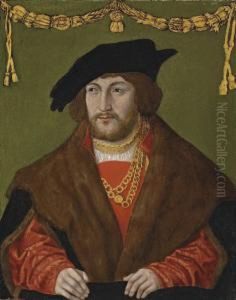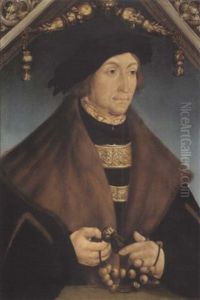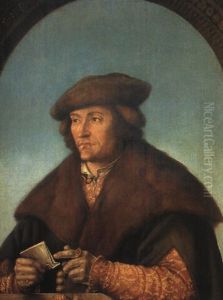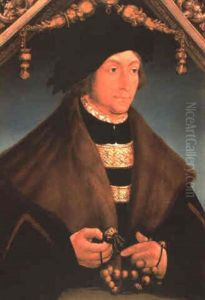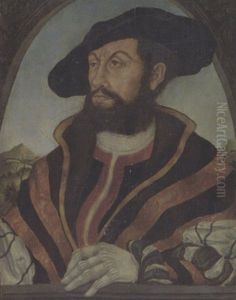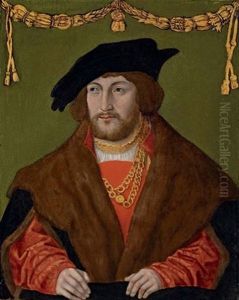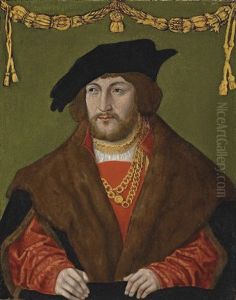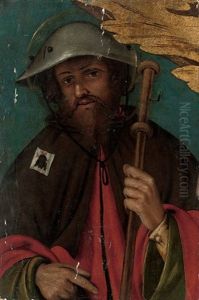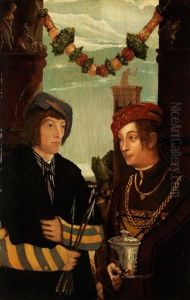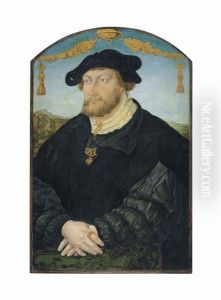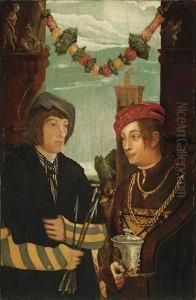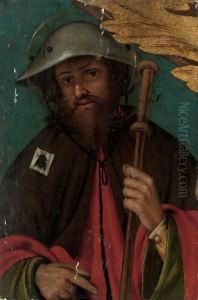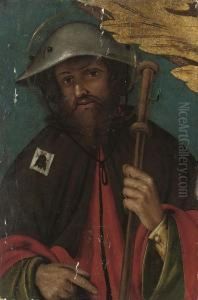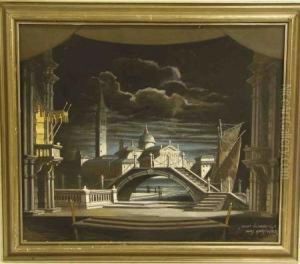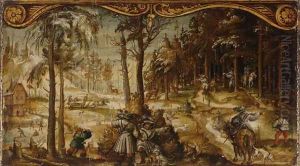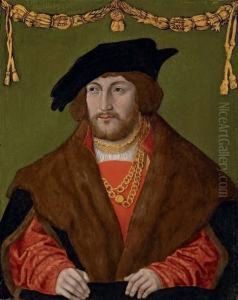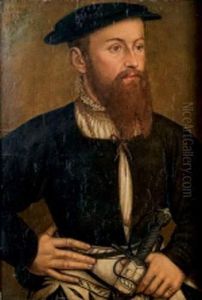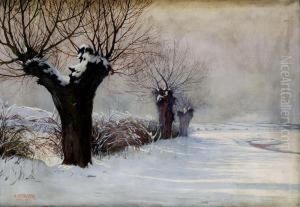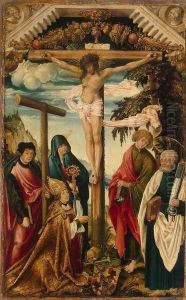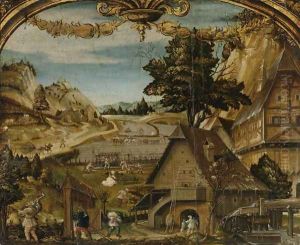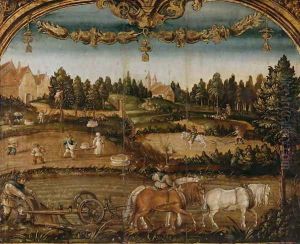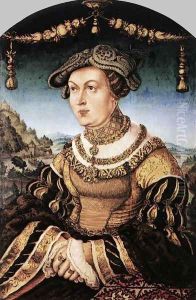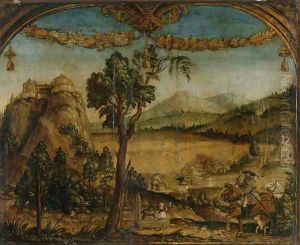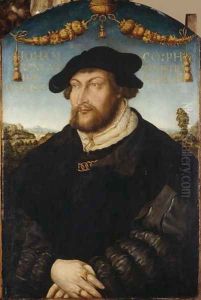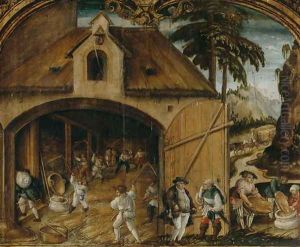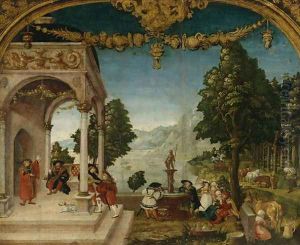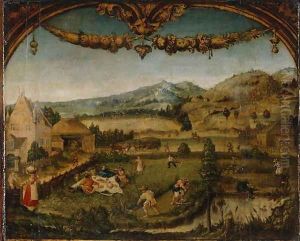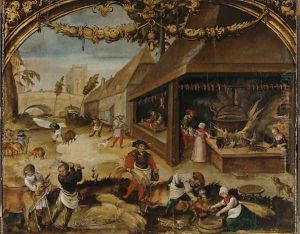Hans Wertinger Paintings
Hans Wertinger, also known as Johann Wertinger, was a German painter primarily known for his work during the Renaissance period. Born in Landshut, Bavaria, in what is today Germany, Wertinger’s exact birth date is not precisely known but is estimated to be between 1465 and 1470. He was active during a time of significant artistic development in Europe and was part of the Danube School, which was known for its innovative landscape painting.
Wertinger’s career was closely tied to the city of Landshut, where he worked for most of his life. He served as a court painter to the Dukes of Bavaria-Landshut, which allowed him to work on a variety of commissions, including altarpieces, portraits, and decorative works. His style combined Gothic tradition with the emerging Renaissance principles, especially the increasing interest in naturalism and the human figure.
One of Wertinger's most significant contributions to art was his incorporation of detailed landscapes into his compositions, which was a hallmark of the Danube School. He painted both religious and secular subjects, displaying a versatility that was highly valued at the time. His portraits are particularly notable for their expressiveness and the attention to the details of clothing and ornamentation, reflecting the fashions and social hierarchies of his era.
Despite his importance during the Renaissance, Wertinger's work was somewhat overshadowed by the likes of Albrecht Dürer and other contemporaries who gained greater fame. Nevertheless, his paintings are considered important for understanding the transition in German art from the late Gothic to the Renaissance style.
Hans Wertinger passed away in 1533 in Landshut. Although not as widely recognized today as some of his peers, his work provides a valuable insight into the art and culture of 16th-century Bavaria and continues to be studied for its contributions to the Northern Renaissance.
